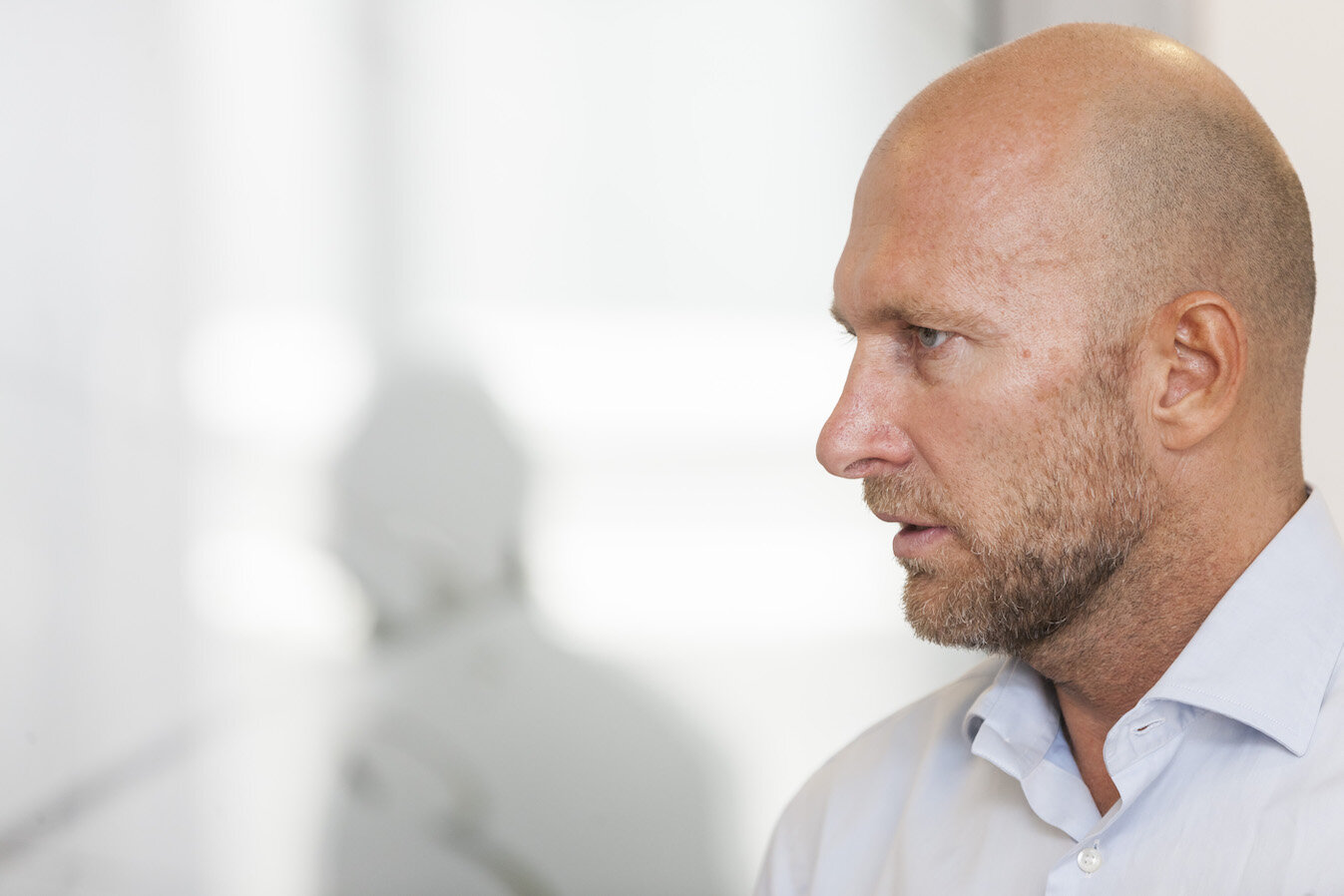Uprising in NYC
Cresta Q&A: Scott Goodson. Founder of StrawberryFrog and the best-selling author of Uprising.
As consumers become ever more questioning of the ethics behind their brands, corporations have committed huge resources to what is known as Brand Purpose marketing. Indeed, this sector was one of the stand-out categories at the last Cresta Awards, attracting hundreds of entries from across the world.
Scott Goodson, and his agency StrawberryFrog, lays claim, with some justification, to being a pioneer in this area long before it became today’s sexiest sector in the industry.
So we caught up with him in New York to understand more about the present and past of what Scott originally called ‘Cultural Movement marketing’.
Cresta: How has the last year (of Covid) been for you and for StrawberryFrog?
Scott Goodson: It’s almost one year since the tempest of Covid hit. Your question brings me back to that time. I was flustered because we were at the epicenter of the worst cases in the worst hit city in the world...inside the Empire State Building.
StrawberryFrog works closely with Northwell, one of the largest health services organizations in the country and certainly one at the center of Covid a year ago.
Back then, we created probably the first Covid awareness campaigns with Northwell, due to the foresight of their leadership, called INFORMATION IS HEALTHY FEAR IS NOT, which contained science-based facts for citizens very early on. Part of this education helped me and StrawberryFrog’s management team to decide late February to vacate our Empire State Building offices and go remote in early March.
Beforehand, we spent a lot of time establishing new frameworks and processes, tools and behaviors with training in order to ensure that our team could remain highly functional despite working across the map.
One key part of our culture is working with positive intent — and this was a key pillar of our new way of working together. You just don’t know what your Frog team mate is facing and how they’re dealing with personal issues in addition to workload. This helped us enormously. That and the fact that our team are incredibly tight and helpful to each other.
We have terrific mentors and everyone is doing their very best for our clients and for our firm. Today one year later all Frogs are working remotely, this is our policy. Some use our offices but only a small percentage who wish to be there.
We have a task force inside the organization who have been examining the issue of work moving forward post Covid whenever this is. And we hope to have a strong recommendation for our amazing team soon.
At the start of the pandemic the management team and I locked arms and agreed that we would do our best to have zero furloughs or layoffs. We brought all Frogs down in salary 10% just in case and to give us enough runway to live up to this ideal. Ideals and principles are most meaningful when they cost you something. At the end of 2020 I can report that we had no layoffs or furloughs, that we paid back all employee reductions and in fact paid bonuses to all staffers.
If there is a silver lining to Covid it is that Chip Walker, our head of strategy, and I wrote a book that seizes on the moment at hand and deals with the biggest challenge of purpose branding, namely helping leaders move from toothless purpose strategy to activating purpose at the core of your company. The book is entitled Activate Brand Purpose and comes out in March. Here is some background.
How do you feel about the idea that more people will work some, if not all, of the time at home even after the pandemic? Is the office environment/culture an important part of StrawberryFrog?
According to a TIME Magazine article in 2000 StrawberryFrog was the first marketing and communications agency to embrace the idea of building a global network of top gig talent.
In our early days we designed and launched Elle.com for Hachette with a team of eight and a freelance team of 30 across the globe, and studios in New Zealand, San Francisco, London and Amsterdam. While other firms had used freelancers they never spoke about it to their clients out of fear of looking weak, we put it on our website and saw it as a strength. Having an extraordinary array of talent across the globe made us at once agile, customized to our clients and not to mention better, doing fresh and more ‘fragrant’ work.
I believe that entrepreneurial-minded talent does better work than layers of pampered corporate employees held under the sword of Damocles.
With this in mind, our culture is designed for agility, to deliver in volatile times, able to move and change. We have not made the decision yet about the future but we have a strong entrepreneurial culture that fosters terrific work and this will ensure that whatever decision we make will be in the best interests of our client Frogs and team mate Frogs.
The name StrawberryFrog is obviously important to you, in that you use terms like Client Frogs and Team Mate Frogs, how did the name come about?
When I set out to start StrawberryFrog with Karin Drakenberg from Sweden, we wanted a name that represented the agility we deliver...challenging the domination and control of the advertising industry by the corporate agency dinosaurs (Ad Age’s words not ours).
Strawberry Frog is a red and blue
frog from the Amazon, it’s a rebel with jeans and conveyed our essence powerfully. It’s the opposite of the dinosaur. Here is a little film that tells the tale from our earliest days.
You are famous for developing the concept of 'Movement Marketing’. Could you explain briefly what this is?
In the 1990s I was working at my own agency in Stockholm doing purpose-based branding for Swedish multinationals. As we launched and built these brands in the Nordics, consumers responded because they sought brands and companies that were driving positive change. But when we launched these brands in Eastern Europe, or Asia, or Australia, Brazil or even the US, people didn’t understand what purpose meant...back then.
When you’re sitting with the CMO of Ericsson Mobile Phones in Thailand and they don’t understand purpose you need to find a different way of explaining what we now know is a purpose-based brand activating purpose to all stakeholders.
This is when I came up with the idea of applying the principles of social movements to activate purpose. Everyone understands what it means to be part of a movement… then it was about us breaking movement-thinking down into a process, which is what we did in 1999 when we started the world’s first Movement Marketing company with the purpose of its own: to create good: good results, good work and good impacts for people, communities and society.
From what we've read, now would appear the ideal moment to be in this area of marketing – the world is full of 'movements'. Have you found the idea an easier 'sell' recently? If so, why do you think that is?
Movement Marketing as we called it when we brought it to the world, or cultural movement, has always been a powerful and original idea. Today the challenge we are dealing with is that many CEOs have developed purpose strategies but do not know how to activate or action them either inside with their employees or externally with consumers to grow their companies whilst driving positive change. We have 20 years of expertise in activating purpose by igniting ‘movements’ across many companies, categories and countries.
What work in 'movement marketing' are you most proud of? And how does your approach and range of work differ from more conventional agencies?
There are examples that come to mind. Our very first client was the launch of the Smart Car for Mercedes and Swatch: to reimagine the urban environment. We worked with the leaders of Google in the earliest days to define their movement, we ignited a movement for Emirates Airline and Mahindra, one of the most powerful companies in India.
More recently there’s been our work in Baby Development for Pampers and the onUp movement for SunTrust, with over six million participants. For Jim Beam we took a stand against the patriarchy and for equality and launched a Movement featuring the first-ever woman spokesperson – Mila Kunis – for the iconic American bourbon. And late last year we designed the Raise Health movement for Northwell Health, and a movement against ageism for Woody Creek distillers featuring William H. Macy.
A movement is about action and creating a community of passionate advocates, there are many opportunities to apply brilliant creativity as well as innovation as I set out in my book back in 2011 entitled Uprising: how to build a brand and change the world by sparking cultural movements.
Could you tell us a little about the Coronavirus work that won SF an award at Cresta 2020?
The best explanation of our Heroes campaign for LifeBridge Health is left to the entry video itself.
A still from StrawberryFrog’s winning Cresta 2020 entry
You were also on the Cresta Jury last year, when we made all entries free and had a huge uptake. How was the experience of judging Cresta?
The Cresta jury was an extraordinary experience in that I was able to see work from across the globe and fresh creativityis always inspiring. But more important was seeing all the new young-blood talent out there from around the world who are genuinely inspiring...from India, China, Africa, South America, Europe and North America.
Finally, what ambitions do you have personally and for SF as we come out of this year of lockdowns and, in the US's case, a difficult political time?
I am at a point in my career where we genuinely want to drive positive change and positive impacts — and live up to our purpose. This is most fulfilling, and more often than not this means designing robust and powerful movements that help CEOs, CMOs, CHROs activate their purpose to the people that matter inside their company and out.
Any last thoughts for our readers?
Creativity in business matters more today than ever before. Not only creativity in communications and marketing but in new solutions for leaders, new expressions, new ideas, new ways of solving old problems.














